Do you have a question about the Panasonic TX-32PM11P and is the answer not in the manual?
Warning regarding live parts accessible when the rear cover is removed.
Instructions for cleaning the TV cabinet and picture tube.
Advice on preventing screen 'shadow' damage from extended use of games/computers.
Explanation of the automatic standby mode after 30 minutes of inactivity.
List of items included with the television set.
Step-by-step guide on how to insert batteries into the remote control.
Instructions for connecting aerial, ancillary equipment, and powering on the TV.
Guide to country selection and automatic station setup (ATP).
Information on Q-Link setup and initial picture correction.
How to use the Geomagnetic Correction feature to level the picture.
Using the front panel controls for Geomagnetic Correction.
Description of buttons and indicators on the TV's front panel.
Explanation of buttons on the remote control and their functions.
Identification of audio and video connection sockets on the front panel.
Overview of the main menu options: Picture, Sound, Setup, and Tuning.
Sub-options within the Picture and Sound menus.
Sub-options within the Setup and Tuning menus, including Auto/Manual setup.
List of aspect ratio adjustments available.
How to use menu titles, sub-menus, and cursor controls.
Using OSD to adjust parameters like Contrast, Brightness, and Colour.
Explanation of MENU, cursor, OK, TV/AV, and N buttons.
How Panasonic Auto selects the best aspect ratio for the picture.
Displaying a true 16:9 picture with no aspect distortions.
Displaying a true 14:9 picture with no aspect distortions.
Expanding a 4:3 picture to fill the screen with horizontal stretching.
Displaying a 4:3 picture at its standard size with no aspect distortions.
Displaying 16:9 letterbox or 4:3 pictures with no aspect distortions.
Displaying 16:9 anamorphic letterbox pictures as full screen.
Displaying 21:9 letterbox pictures as full screen with slight stretching.
Using the HOLD key to freeze the current picture display.
How to open and navigate the main menu system.
Choosing between Dynamic, Normal, and Cinema screen settings.
Overview of the Picture, Sound, and Setup menu functions.
Selecting and storing screen settings like Dynamic, Normal, and Cinema.
Adjusting Contrast, Brightness, Colour, Sharpness, and Colour Balance.
Using P-NR to automatically reduce unwanted picture interference.
Adjusting Volume, Bass, Treble, and Balance for sound quality.
Configuring MPX, Mode, and Ambience for enhanced audio.
Configuring AV output, Teletext modes, and timer functions.
Adjusting flicker reduction, Q-Link, text, and OSD languages.
Accessing tuning menus and geomagnetic correction features.
Setting up Q-Link for VCR communication and selecting text character sets.
Accessing the tuning menu and selecting the On Screen Display language.
Using Geomagnetic Correction to fix picture tilt or coloured patches.
Managing programme positions and automatically tuning stations.
Manually tuning individual programme positions and fine-tuning reception.
Setting transmission standards and adjusting volume levels per station.
Configuring the TV for use with an external decoder via AV1 or AV2.
Instructions for removing unwanted channels from the programme list.
Overview of the programme edit screen and its functions.
Steps to add new channels and rearrange existing programme positions.
Manually tuning specific programme positions and channel numbers.
How to rename channels and set access locks for programme positions.
Selecting the appropriate TV system (PAL/SECAM) for each programme.
Transferring programme information from the TV to a VCR or DVD/R.
Using buttons to select, scroll, and confirm programme positions.
Steps to start the automatic tuning process after selecting the country.
How the TV searches for stations and sends data to VCR/DVD/R via Q-Link.
Procedure for selecting a programme position and starting manual tuning.
How to store the tuned programme and exit the manual tuning menu.
Using front panel buttons to enter tuning mode and select functions.
Steps for changing positions, starting search, and storing tuned stations.
Navigating through the menus to reach the OSD language selection.
Choosing the desired language for on-screen display messages.
Connecting VCR/DVD/R and understanding Q-Link requirements.
Using the DIRECT TV REC button to record the current programme.
Ensuring correct recordings by sharing tuning data between TV and VCR/DVD/R.
Using Auto Power functions and turning off Q-Link communication.
Operating basic functions like Standby, Play, Stop, and Record.
Using Skip, Pause, and Programme Up/Down for playback control.
Understanding LIST mode and FLOF (FASTEXT) for teletext.
Selecting pages, controlling display size, and revealing information.
Storing favourite teletext pages and resetting teletext settings.
Using Hold and Favourite Page (F.P.) functions for teletext.
Displaying and updating news flashes and other information.
Accessing sub-coded pages and returning to the main index.
Selecting AV sources and understanding automatic switching.
Description of headphone, S-Video, and RCA input/output sockets.
Details of rear panel audio output and AV1/AV2 SCART socket connections.
Diagrams showing connections for VCRs, satellite receivers, DVD players, etc.
Detailed pin configuration for the AV1 21-pin SCART terminal.
Pin configurations for the AV2 SCART and S-Video sockets.
Troubleshooting snowy, multiple, interference, and coloured patch picture problems.
Resolving no sound, noisy sound, and weak sound reception problems.
Guidance on when to contact service and what information to provide.
Details on power, consumption, dimensions, weight, and picture tube size.
Information on receiving systems, programme positions, teletext, and AV inputs.
Instructions for disposing of electrical and electronic equipment correctly.
Guidance for business users in the EU and users outside the EU.
Warning regarding live parts accessible when the rear cover is removed.
Instructions for cleaning the TV cabinet and picture tube.
Advice on preventing screen 'shadow' damage from extended use of games/computers.
Explanation of the automatic standby mode after 30 minutes of inactivity.
List of items included with the television set.
Step-by-step guide on how to insert batteries into the remote control.
Instructions for connecting aerial, ancillary equipment, and powering on the TV.
Guide to country selection and automatic station setup (ATP).
Information on Q-Link setup and initial picture correction.
How to use the Geomagnetic Correction feature to level the picture.
Using the front panel controls for Geomagnetic Correction.
Description of buttons and indicators on the TV's front panel.
Explanation of buttons on the remote control and their functions.
Identification of audio and video connection sockets on the front panel.
Overview of the main menu options: Picture, Sound, Setup, and Tuning.
Sub-options within the Picture and Sound menus.
Sub-options within the Setup and Tuning menus, including Auto/Manual setup.
List of aspect ratio adjustments available.
How to use menu titles, sub-menus, and cursor controls.
Using OSD to adjust parameters like Contrast, Brightness, and Colour.
Explanation of MENU, cursor, OK, TV/AV, and N buttons.
How Panasonic Auto selects the best aspect ratio for the picture.
Displaying a true 16:9 picture with no aspect distortions.
Displaying a true 14:9 picture with no aspect distortions.
Expanding a 4:3 picture to fill the screen with horizontal stretching.
Displaying a 4:3 picture at its standard size with no aspect distortions.
Displaying 16:9 letterbox or 4:3 pictures with no aspect distortions.
Displaying 16:9 anamorphic letterbox pictures as full screen.
Displaying 21:9 letterbox pictures as full screen with slight stretching.
Using the HOLD key to freeze the current picture display.
How to open and navigate the main menu system.
Choosing between Dynamic, Normal, and Cinema screen settings.
Overview of the Picture, Sound, and Setup menu functions.
Selecting and storing screen settings like Dynamic, Normal, and Cinema.
Adjusting Contrast, Brightness, Colour, Sharpness, and Colour Balance.
Using P-NR to automatically reduce unwanted picture interference.
Adjusting Volume, Bass, Treble, and Balance for sound quality.
Configuring MPX, Mode, and Ambience for enhanced audio.
Configuring AV output, Teletext modes, and timer functions.
Adjusting flicker reduction, Q-Link, text, and OSD languages.
Accessing tuning menus and geomagnetic correction features.
Setting up Q-Link for VCR communication and selecting text character sets.
Accessing the tuning menu and selecting the On Screen Display language.
Using Geomagnetic Correction to fix picture tilt or coloured patches.
Managing programme positions and automatically tuning stations.
Manually tuning individual programme positions and fine-tuning reception.
Setting transmission standards and adjusting volume levels per station.
Configuring the TV for use with an external decoder via AV1 or AV2.
Instructions for removing unwanted channels from the programme list.
Overview of the programme edit screen and its functions.
Steps to add new channels and rearrange existing programme positions.
Manually tuning specific programme positions and channel numbers.
How to rename channels and set access locks for programme positions.
Selecting the appropriate TV system (PAL/SECAM) for each programme.
Transferring programme information from the TV to a VCR or DVD/R.
Using buttons to select, scroll, and confirm programme positions.
Steps to start the automatic tuning process after selecting the country.
How the TV searches for stations and sends data to VCR/DVD/R via Q-Link.
Procedure for selecting a programme position and starting manual tuning.
How to store the tuned programme and exit the manual tuning menu.
Using front panel buttons to enter tuning mode and select functions.
Steps for changing positions, starting search, and storing tuned stations.
Navigating through the menus to reach the OSD language selection.
Choosing the desired language for on-screen display messages.
Connecting VCR/DVD/R and understanding Q-Link requirements.
Using the DIRECT TV REC button to record the current programme.
Ensuring correct recordings by sharing tuning data between TV and VCR/DVD/R.
Using Auto Power functions and turning off Q-Link communication.
Operating basic functions like Standby, Play, Stop, and Record.
Using Skip, Pause, and Programme Up/Down for playback control.
Understanding LIST mode and FLOF (FASTEXT) for teletext.
Selecting pages, controlling display size, and revealing information.
Storing favourite teletext pages and resetting teletext settings.
Using Hold and Favourite Page (F.P.) functions for teletext.
Displaying and updating news flashes and other information.
Accessing sub-coded pages and returning to the main index.
Selecting AV sources and understanding automatic switching.
Description of headphone, S-Video, and RCA input/output sockets.
Details of rear panel audio output and AV1/AV2 SCART socket connections.
Diagrams showing connections for VCRs, satellite receivers, DVD players, etc.
Detailed pin configuration for the AV1 21-pin SCART terminal.
Pin configurations for the AV2 SCART and S-Video sockets.
Troubleshooting snowy, multiple, interference, and coloured patch picture problems.
Resolving no sound, noisy sound, and weak sound reception problems.
Guidance on when to contact service and what information to provide.
Details on power, consumption, dimensions, weight, and picture tube size.
Information on receiving systems, programme positions, teletext, and AV inputs.
Instructions for disposing of electrical and electronic equipment correctly.
Guidance for business users in the EU and users outside the EU.
| Screen Size | 32 inches |
|---|---|
| Display Type | CRT |
| Resolution | Standard Definition |
| Aspect Ratio | 4:3 |
| Tuner | Analog |
| HDMI Ports | 0 |
| SCART Ports | 2 |
| VGA Input | No |
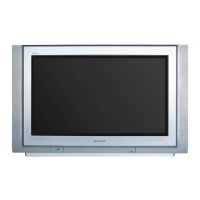
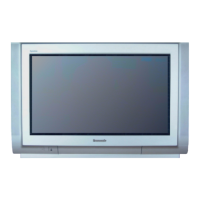
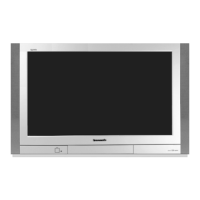
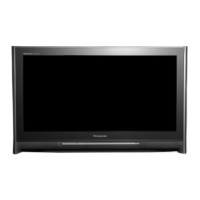
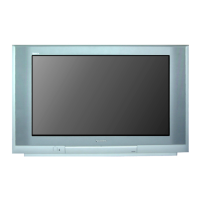

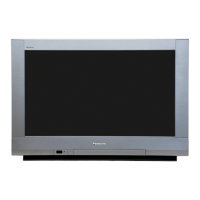





